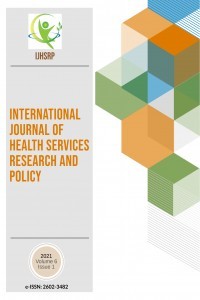FREQUENCY AND POWER ANALYSIS OF EEG THETA ACTIVITY DURING DIFFERENT MATHEMATICAL AND VERBAL TASK IN MALES
FREQUENCY AND POWER ANALYSIS OF EEG THETA ACTIVITY DURING DIFFERENT MATHEMATICAL AND VERBAL TASK IN MALES
___
- [1] Sammer G, Blecker C, Gebhardt H, et al. “Relationship between regional hemodynamic activity and simultaneously recorded EEG‐theta associated with mental arithmetic‐induced workload”, Hum Brain Mapp, 28(8), 793-803, 2007.
- [2] Amin HU, Malik AS, Badruddin N, et al. “EEG mean power and complexity analysis during complex mental task”, In 2013 ICME International Conference on Complex Medical Engineering, IEEE, 2013, (pp. 648-651). DOI: 10.1109/ICCME.2013.6548329
- [3] Butkevičiūtė E, Bikulčienė L, Sidekerskienė T, et al. “Removal of movement artefact for mobile EEG analysis in sports exercises”, IEEE Access, 7, 7206-7217, 2019.
- [4] Gong Y, Xu S. “Mental state detection in classroom based on EEG brain signals”, Nat Sci, 11(11), 315, 2019.
- [5] Jensen O, Tesche C D. “Frontal theta activity in humans increases with memory load in a working memory task”, Eur J Neurosci, 15(8), 1395-1399, 2002.
- [6] Ghaderi AH, Nazari MA, Darooneh AH. “Functional brain segregation changes during demanding mathematical task”, Int J Neurosci, 129(9), 904-915, 2019.
- [7] BIOPAC MANBSL4., Reference manuals of AcqKnowledge Software Guide and MP System Hardware Guide, BIOPAC Systems Inc., 42 Aero Camino, Goleta, CA -USA., 2019.
- [8] RAMOS Julieta, et al. “EEG activity during cognitive performance in women” Int J Neurosci, 69(1-4), 185-195, 1993.
- [9] Jensen O, Tesche CD. “Frontal theta activity in humans increase with memory load in a working memory task”, Eur J Neurosci, 15(8), 1395-1399, 2002.
- [10] Ishii R, Canuet L, Ishihara T, et al. “Frotal midline theta rhythm and gamma power changes during focused attention on mental calculation: an MEG beam former analysis”, Front Hum Neurosci, 8, 406, 2014.
- [11] Klimesch W. “EEG alpha and theta oscillations reflect cognitive and memory performance: a review and analysis”, Brain Res Brain Res Rev, 29, 169-195, 1999.
- [12] Schack B, Vath N, Petsche H, et al. “Phase-coupling of theta–gamma EEG rhythms during short-term memory processing”, Int J Psychophysiol, 44(2), 143-163, 2002.
- [13] Katahira K, Yamazaki Y, Yamaoka C, et al. “EEG correlates of the flow state: A combination of increased frontal theta and moderate frontocentral alpha rhythm in the mental arithmetic task” Front Psychol, 9, 300, 2018.
- [14] So WK, Wong SW, Mak JN, et al. “An evaluation of mental workload with frontal EEG”, PloS one, 12(4), 2017. e0174949. 10.1371/journal.pone.0174949
- Yayın Aralığı: Yılda 3 Sayı
- Başlangıç: 2016
- Yayıncı: Rojan GÜMÜŞ
THE EVALUATION OF BURNOUT AND COMMUNICATİON SKILLS IN PRIMARY CARE STAFF
Nilüfer EMRE, Tamer EDİRNE, Aysun ÖZŞAHİN, Ali Rıza TÜRK
EFFECT OF EATING ATTITUDES OF INDIVIDUALS WITH TYPE 2 DIABETES UPON QUALITY OF LIFE
TOWARD ORGANIZATIONAL EVIDENCE-BASED MANAGEMENT IN HEALTHCARE ORGANIZATIONS
EVALUATION OF SLEEP QUALITY WITH BURNOUT LEVEL IN EMERGENCY MEDICAL ASSISTANTS
Dilek ATİK, Basar CANDER, Bensu BULUT, Ramiz YAZICI, Ramazan ÜNAL, Hasan KAYA
HISTOPATHOLOGICAL FINDINGS AND CLINICAL OUTCOMES OF PATIENTS AFTER LAPAROSCOPIC SLEEVE GASTRECTOMY
Muhammed Raşid AYKOTA, Sevda YILMAZ
EVALUATION OF CLINICAL USE HABİTS OF TUMOR MARKER TESTS
Samuel TESEMA, Filimona BİSRAT, Tenager TADESSE, Melaku TSEHAY
Abdallah ALWAWİ, Ayşegül KOÇ, Bahar İNKAYA
VIOLENCE AGAINST HEALTH WORKERS AND MEASURES TO PREVENT VIOLENCE
